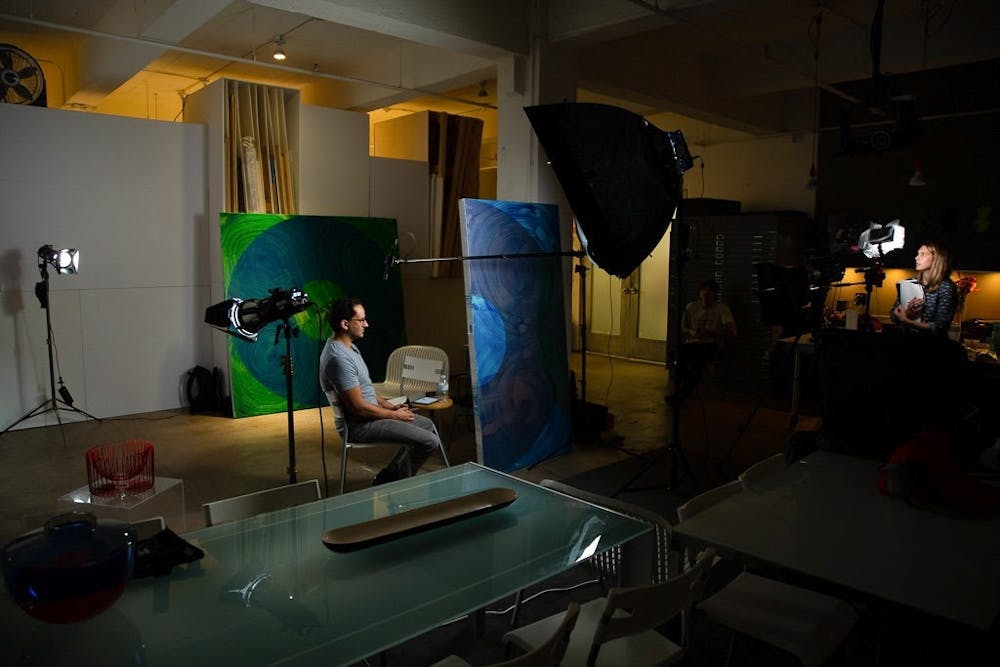Jared Kaplan, an associate professor at Hopkins, created a three-part video series about theoretical physics that was recently published by Scientific American. Kaplan collaborated with Emily Driscoll, a documentary producer and director, to produce these videos.
The two worked to make this series because they wanted to explain challenging physics topics in an accessible way. Kaplan describes the first video in the series “Does the Universe have to be this way? What if it wasn’t? as an interesting way to wonder why the laws of physics are the way that they are in our universe.
“The first video... seeks to spark viewer's curiosity with questions about how we’d experience the world, if the laws of physics were tweaked in different ways,” Driscoll wrote in an email to The News-Letter.
The second video addresses the more complex issue of inhomogeneities and their relation to our understanding of the universe, according to Driscoll. She said that “How is a dazzle of zebras like matter in the Universe?” was created with the intention of creating something different. In an email to The News-Letter Kaplan explained that because of the way they covered this topic, the end result is incredibly unique.
“The second [video] is more esoteric and aimed at being a little bit different in the sense that it’s about why there’s structure in the universe,” Kaplan wrote. “That’s something that’s sometimes addressed but not usually the first point that’s made in a lot of discussions of cosmology.”
The third video “Why is Gravity Different?” is a shortened version of a popular talk that Kaplan has given before. It focuses on quantum gravity, which Kaplan explains was one of the first forces to be understood but remains the most difficult to understand currently.
These videos were created with the intention of increasing outreach to an audience outside of the physics community.
This work was supported by the National Science Foundation Career grant, which Kaplan received nearly six years ago. He thought that a video series would be a perfect opportunity to make some concepts in physics more accessible. He was also inspired by the documentary film Particle Fever which was produced and narrated by David Kaplan (no relation), a professor of Physics and Astronomy at Hopkins.
Jared Kaplan met Driscoll a few years ago while consulting on a video about quantum gravity for the In Theory series made by Quanta Magazine. Kaplan loved the film and reached out to Driscoll to propose working together on this project.
“Dr. Kaplan broke down a complex principle in a way that was understandable,” Driscoll wrote. “Since I love to create videos that communicate science in different and creative ways, I was thrilled to work with Dr. Kaplan and find engaging ways to explore questions of the universe.”
One of the main goals of the project was to create something that was fun and different from the public lectures and short explanation videos that already exist.
“The motivation was to make it sufficiently unique so it wouldn’t just seem like a copy of all of the other things that were out there,” Kaplan wrote. “That was relevant for both topics and style.”
The two approached this by utilizing metaphors and analogies to explain complex physics principles in order to reach an audience of people without a scientific background.
“Dr. Kaplan and I sought to approach complex and deceptively simple questions about the formation and laws of our universe in a way that brought metaphors to life in fun and memorable ways,” Driscoll wrote.
The videos include fun characters and playful animations against a colorful backdrop to create a unique experience for viewers. Illustrator and animator Lottie Kingslake created the animations inspired by artist Marylyn Dintenfass. Kaplan emphasized the informal setting of the videos in conjunction with the whimsical animations and silly analogies that create a fun experience.
“Many physics videos can be very formal,” Driscoll wrote. “We wanted to add a dash of humor and create vivid scenes to cement the concepts. I hope we showed that you can blend humor and fanciful scenes while exploring important and serious stories.”
Both Driscoll and Kaplan expressed a similar sense of excitement regarding the future of the series. Driscoll explained that they plan to show the series at film festivals. She also mentioned that she would love to expand the series in the future. Kaplan expressed a similar sentiment.
“I think it would be fun to do it again,” Kaplan wrote. “It seems like it’s a nice way to get some interesting stories out there.”





